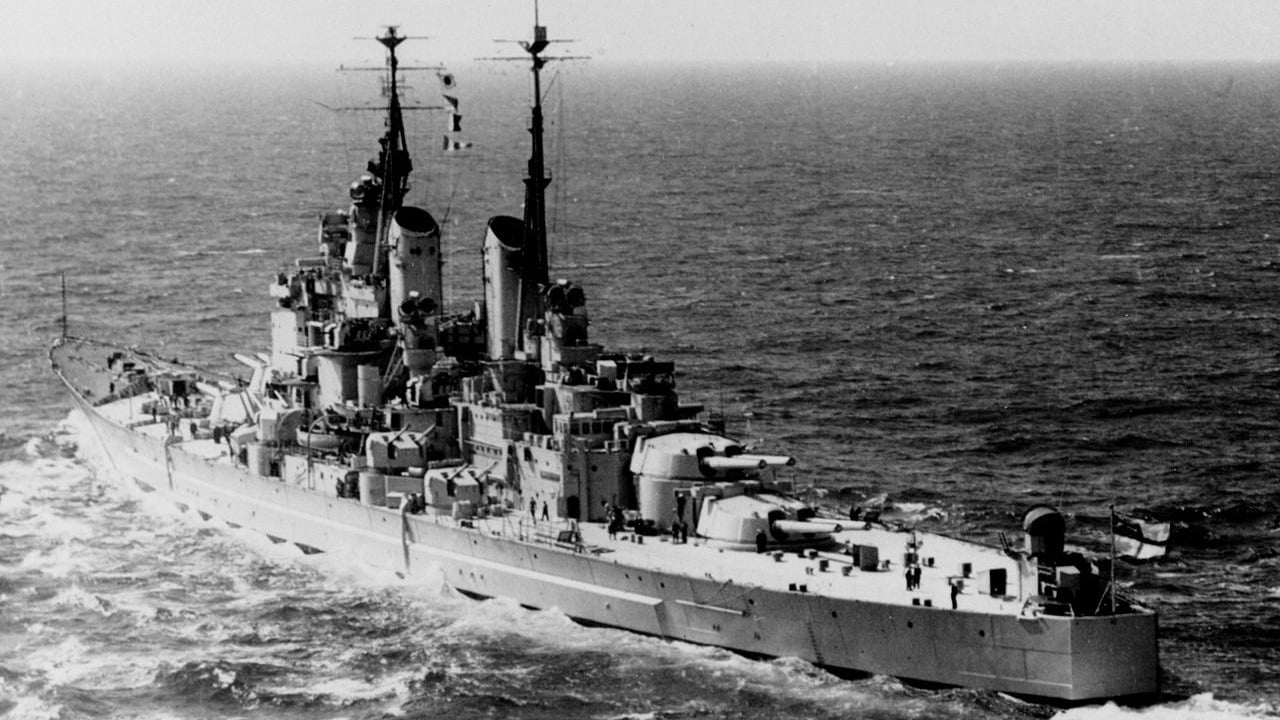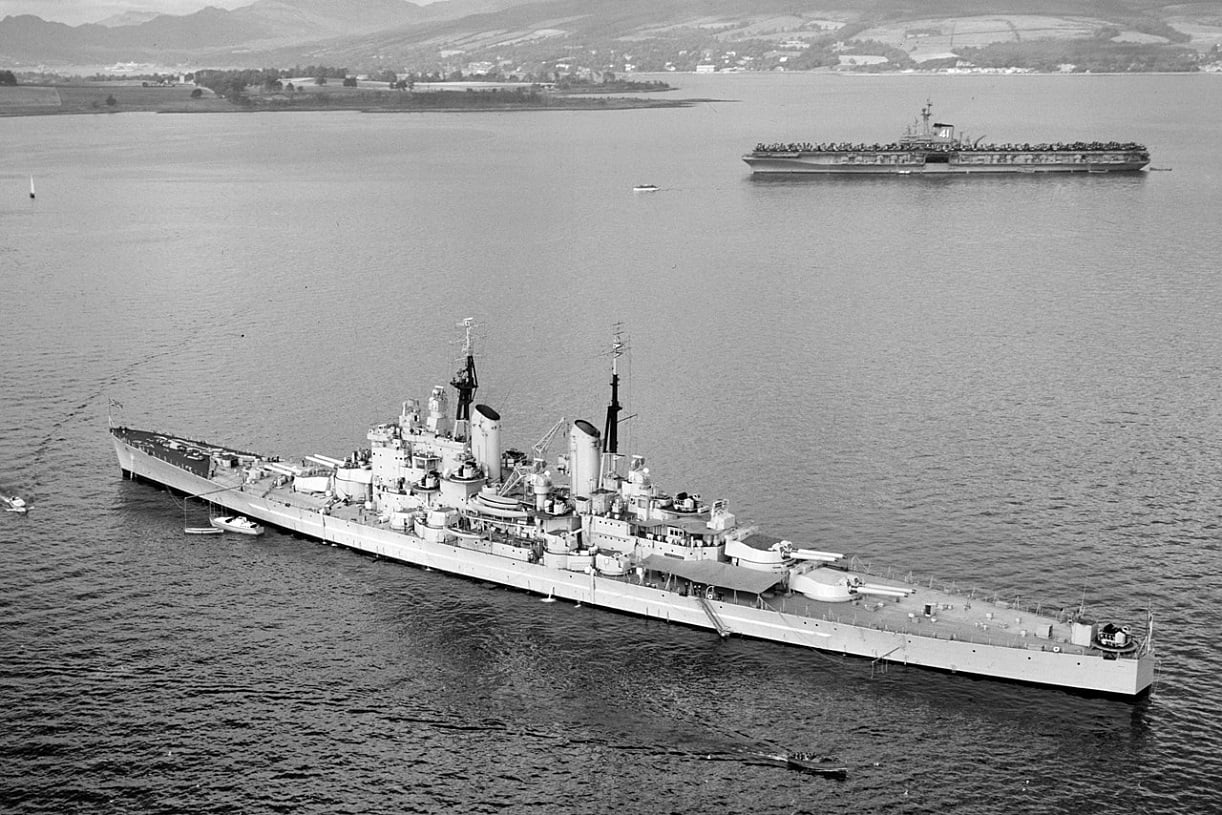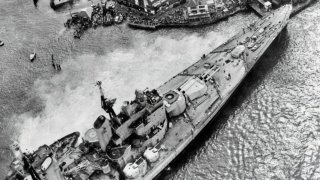Ranked: 5 Worst Battleships of All Time
The article highlights five battleships deemed ineffective or "a waste of steel" due to design flaws, poor performance, or obsolescence. The USS Massachusetts (BB-2) was unstable and suffered accidents, including explosions and groundings.
What You Need to Know: The article highlights five battleships deemed ineffective or "a waste of steel" due to design flaws, poor performance, or obsolescence. The USS Massachusetts (BB-2) was unstable and suffered accidents, including explosions and groundings.

-Sweden's Vasa sank on her maiden voyage in 1628 because it was top-heavy with too many cannons. The Austro-Hungarian Tegetthoff-class battleships had inadequate underwater protection and saw little action, with some sunk by Italian forces.
-Russia's Gangut-class sacrificed protection for speed and firepower but faced delays and limited engagement. HMS Vanguard, launched in 1946 after battleships were already outdated, never saw combat, rendering it unnecessary.
A Waste of Steel: The Five Most Disappointing Battleships
There are countless lists of the best battleships ever to sail the world's oceans, and while there are countless metrics to consider – the size, individual weapon power, combat record as well as imagined combat performance – a lot of it comes down to how the warship fared compared to its contemporaries.
In other words, when HMS Dreadnought was launched in 1906, her design revolutionized naval power, resulting in a global arms race. Moreover, the ship's entry into service in 1906 represented such an advance in naval technology that her name came to be associated with an entire generation of battleships – while she further made the vessels already in service largely obsolete. Yet, HMS Dreadnaught's combat history was not all that impressive – and her only significant action was ramming and sinking a German submarine during the First World War.
However, there are still several warships that immediately top the list of vessels that were simply a waste of steel!
USS Massachusetts (BB-2)
The Indiana-class, pre-dreadnought, was authorized in 1890 and commissioned six years later, becoming the second "modern" battleship built for the U.S. Navy. However, despite being a "battleship" in name with heavy armor and ordnance, she had been designed for coastal defense and her decks were not safe from high waves on the open ocean!
Even worse, if both of her then-giant 13-inch guns were turned to one side the vessel would list severely. During a training maneuver and gunnery practice, she suffered an explosion in one of her 8-inch gun turrets, which killed nine sailors. She further ran aground twice, which required months of repairs each time.
It could be argued that USS Massachusetts' greatest success was in 1921 when she was scuttled in shallow water off Pensacola, Florida, and used as a target for experimental artillery. Her wreck was never scrapped and remains a popular diving spot. Her rusting hulk is considered the oldest battleship still in existence.
The Vasa
Technically not a modern battleship in the modern sense, the Swedish Empire's Vasa was one of the largest warships of her day and she was thus a battleship of the era – or rather was meant to be.
Her size was also her Achilles Heel! On August 10, 1628, the Swedish Navy essentially answered the question "Can a warship be too big" when the Vasa sank on her maiden voyage.
Filled with wooden carvings that depicted the exploits of the Swedish royal family, and built to be as beautiful as she was powerful for King Gustav II Adolf, Vasa proved to be so top-heavy, thanks to the unprecedented 64 bronze cannons carried aboard, that the ship was simply unstable and foundered only a few minutes after encountering a wind stronger than a light breeze.
After most of her valuable bronze cannons were salvaged, the ship was largely forgotten until the 1950s when she was salvaged in Stockholm Harbor. Today the partially restored warship is housed in a museum and has become the nation's most popular tourist attraction.
Tegetthoff-class
The class of four dreadnought battleships built for the Austro-Hungarian Navy was noted for being fairly well-armed despite limited dimensions, and they were initially seen as formidable adversaries for the Italian Ships.
Yet, though their speed was considered adequate for the Mediterranean, they suffered from a major flaw – namely their lack of underwater protection. The 1.9-inch (50mm) anti-torpedo bulkhead protected only the machinery, while the compartmentation was poor.
Perhaps out of fear that the armor was so lacking, the Tegetthoff-class battleships stayed mostly inactive at Pola for the duration of the war, only taking part in an ill-fated sortie in 1918 that saw the Szent Istvan sunk by Italian MAS-boats, while her sister Viribus Unitis was sunk soon after in a raid by Italian frogman while at anchor.
The Gangut-class
Like the Austro-Hungarian Navy's dreadnoughts, Russia's Gangut-class was built just before the First World War, and the wrong compromises were made. Protection and endurance were sacrificed for firepower and speed, and it has been suggested that against modern British or German ships of the era, the Russian warships would have suffered badly.
The ships were designed following the Russian Navy's defeat to the Japanese at the Battle of Tsushima in 1905. The Russian Empire sought to produce more modern and capable warships. Unfortunately, those ambitions outstripped the limited technical and industrial resources available to Russia at the time.
Even worse, construction was delayed by financing problems until the Duma finally authorized the ships in 1911.
Fortunately for the Russian Navy, Germany never entered the Gulf of Finland, which the ships were tasked with defending. Though the crews were spared some of the horrors of the First World War, they still participated in the general mutiny of the Baltic Fleet after the February Revolution in 1917 and subsequently joined the Bolsheviks later that year.
HMS Vanguard
The Royal Navy had a proud history of building amazing and truly historic warships and genuine battleships. But the HMS Vanguard was launched in 1946, far after the age of the battleship was over, and she never was tested in any sort of combat and never was able to prove her worth.

After the sinking of HMS Prince of Wales in late 1941, the writing should have been on the wall that the days of battleships were over!
When she entered service, HMS Vanguard was essentially a relic of a bygone era. Though the largest British battleship ever built, a controversial decision had been made to employ the smaller 15-inch guns – even as the then U.S. Navy modern battleships, as well as the HMS Nelson-class, were outfitted with 16-inch main guns. There was a serious concern that her four sets of the twin Mk I 15-inch guns lacked the range or armor penetration of the more recent and larger weapons.
It was a moot point.
She never fired her guns in anger and never was engaged in combat. Maybe HMS Vanguard wasn't really the worst battleship, but she was built when she was no longer needed.
Author Experience and Expertise: Peter Suciu
Peter Suciu is a Michigan-based writer. He has contributed to more than four dozen magazines, newspapers, and websites with over 3,200 published pieces over a twenty-year career in journalism. He regularly writes about military hardware, firearms history, cybersecurity, politics, and international affairs. Peter is also a Contributing Writer for Forbes and Clearance Jobs. You can follow him on Twitter: @PeterSuciu.
Email the author: [email protected].
All images are Creative Commons.


